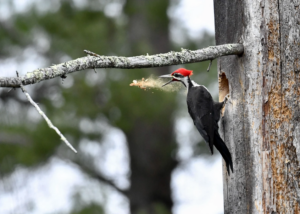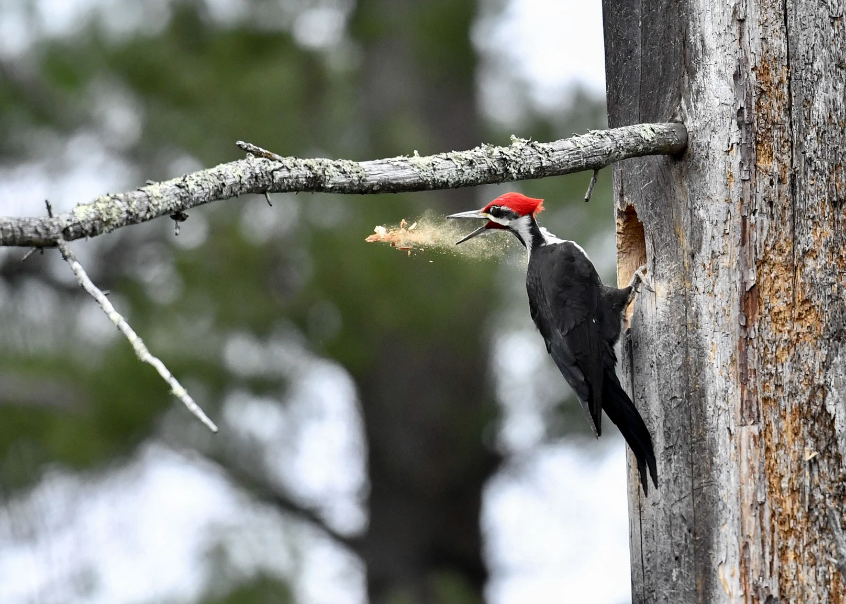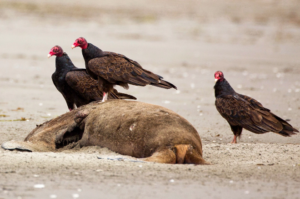This week, my ‘swamp pond’ opened up and the mallards are back. Along with them, the redwing blackbirds have returned to our feeders. In Northern Wisconsin, birds play an indispensable role, not only in shaping the ecological balance but also in weaving the cultural fabric of the communities that call this land home. The presence of birds is not just a sight to behold but a crucial component for both the environment and the people of Northern Wisconsin.

Competition for quality tree cavities to nest in is tight, and birds like this Pileated Woodpecker create some of the most sought-after abodes.
Photo: Katherine Davis/Audubon Photography Awards
Birds serve as ecological barometers, indicating the health of ecosystems. In Northern Wisconsin, where dense forests and vast wetlands dominate the landscape, avian species act as key indicators of environmental quality. The diversity of bird species reflects the richness of habitats, from the majestic bald eagle soaring over the lakes to the elusive warblers flitting through the treetops.
Competition for quality tree cavities to nest in is tight, and birds like this Pileated Woodpecker create some of the most sought-after abodes. Photo: Katherine Davis/Audubon Photography Awards
One of the most significant contributions of birds lies in their role as natural pest controllers. Many species, such as chickadees, nuthatches, and woodpeckers, help control insect populations, thereby regulating pest outbreaks that could otherwise devastate forests and agricultural lands. Moreover, birds aid in seed dispersal and pollination, facilitating the regeneration of plant communities and maintaining the biodiversity of Northern Wisconsin’s ecosystems.
Vultures are the only vertebrate animals that eat carrion exclusively. (Other scavengers, like coyotes, also hunt for food.) Because vultures are so singularly focused, they’re remarkably efficient at picking up the scraps. Research has shown that when vulture populations fall, the number of rotting carcasses on a landscape goes up—by a factor of 10 in a South Carolina study. In one Kenyan study, scientists noted that without vultures, carcasses took three times the standard amount of time to decompose.
More rotting stuff means a higher risk of disease for humans and other animals. Next time you go on a hike and don’t come across a dead deer, thank a vulture.
Preserving forests, wetlands, and grasslands not only safeguards avian biodiversity but also ensures the integrity of entire ecosystems.
Initiatives such as land conservation easements, habitat restoration projects, and the establishment of migratory bird corridors are essential for mitigating the impact of habitat fragmentation and climate change on bird populations.
Beyond their ecological significance, birds hold profound cultural importance for the people of Northern Wisconsin. Traditional practices, such as bird watching, storytelling, and ceremonial dances, honor the role of avian species in indigenous culture, fostering a deep sense of reverence and stewardship for the natural world.
On northern Wisconsin’s landscapes, birds emerge as integral threads, binding together the intricate web of ecological and cultural connections. Their presence enriches the environment, sustains biodiversity, and fosters a profound sense of wonder and belonging among the region’s inhabitants. As guardians of Northern Wisconsin’s ecology and culture, it is imperative to recognize and uphold the importance of birds, ensuring their continued conservation for generations to come.


